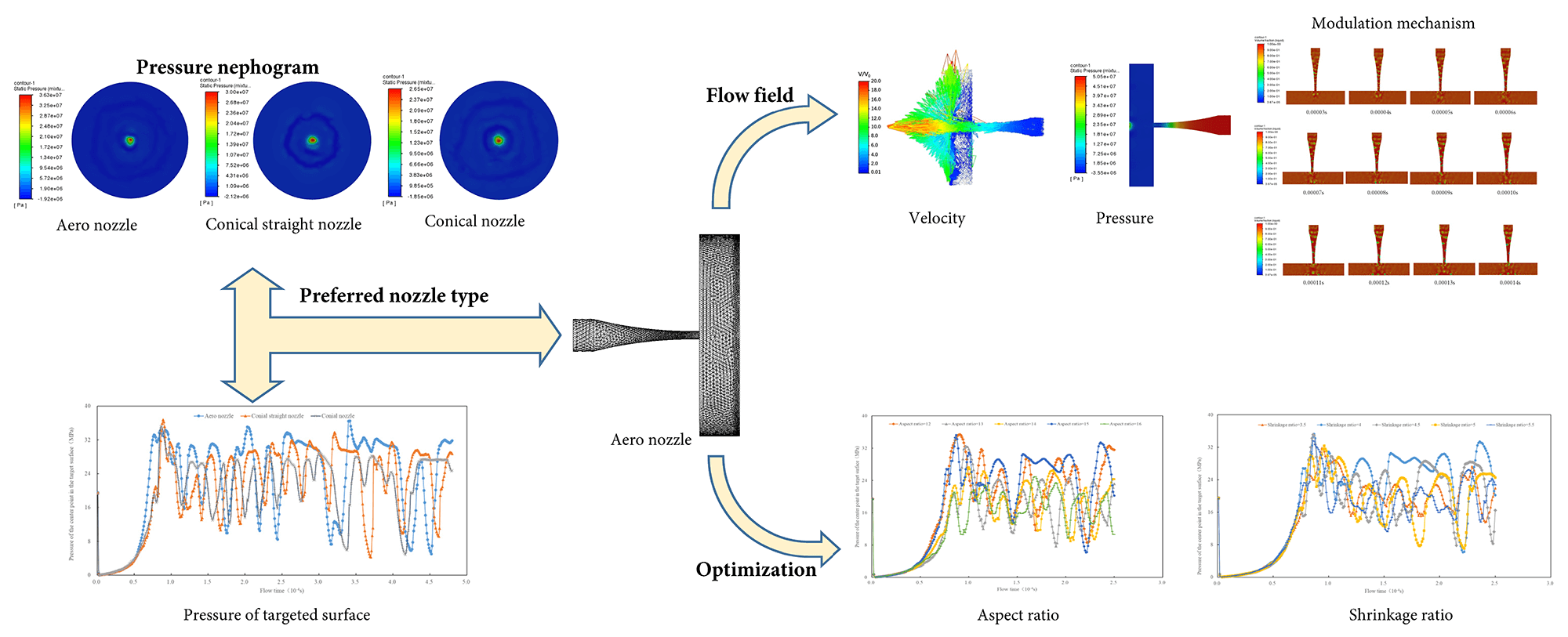 Open Access
Open Access
ARTICLE
Wei Chen*, Yuanteng Zhao, Yue Liang
FDMP-Fluid Dynamics & Materials Processing, DOI:10.32604/fdmp.2025.073778
Abstract In deep underground engineering, geological disposal of nuclear waste, and geothermal development, the granite–mortar interface represents a critical weak zone that strongly influences sealing performance under high-temperature conditions. While previous studies have primarily focused on single materials, the dynamic evolution of interface permeability under thermal loading remains insufficiently understood. In this study, time-resolved gas permeability measurements under thermal cycling (20°C → 150°C → 20°C) were conducted, complemented by multi-scale microstructural characterization, to investigate the nonlinear evolution of permeability. Experimental results indicate that interface permeability at room temperature is approximately one order of magnitude higher than… More >
 Open Access
Open Access
ARTICLE
Yang Dou1, Hao Qin1, Yuzhi Zhang1,2, Ning Wang1, Haiqing Liu3,4, Wanli Yang1,2,4,*
FDMP-Fluid Dynamics & Materials Processing, DOI:10.32604/fdmp.2025.070082
Abstract In recent years, tuned liquid dampers (TLDs) have emerged as a focal point of research due to their remarkable potential for structural vibration mitigation. Yet, progress in this field remains constrained by an incomplete understanding of the fundamental mechanisms governing sloshing-induced loads in liquid-filled containers. Aqueducts present a distinctive case, as the capacity of their contained water to function effectively as a TLD remains uncertain. To address this gap, the present study investigates the generation mechanisms of sloshing loads under non-resonant cases through a two-dimensional (2D) computational fluid dynamics (CFD) model developed in ANSYS Fluent.… More >
 Open Access
Open Access
ARTICLE
Fengxia Shi1, Jian Zhao2,3,*, Xiaodong Dai1, Guoxin Zhang4, Yuan Lu4, Yuyan Shang1
FDMP-Fluid Dynamics & Materials Processing, DOI:10.32604/fdmp.2025.073836
Abstract Gas–liquid two-phase jets exhibit markedly enhanced impact performance due to the violent collapse of entrained bubbles, which generates transient microjets and shock waves. The geometry of the nozzle is a decisive factor in controlling jet formation, flow modulation, and impact efficiency. In this work, the structural optimization of gas–liquid two-phase nozzles was investigated numerically using the Volume of Fluid (VOF). Simulation results show that the aero-shaped nozzle delivers a significantly stronger impact on the target surface than conventional geometries. Specifically, its impact pressure is 21% higher than that of a conical straight nozzle and 37%… More >
Graphic Abstract

 Open Access
Open Access
ARTICLE
Zhengqing Zhang1,2,3,*, Xiaojun Yuan2, Hui Wu2
FDMP-Fluid Dynamics & Materials Processing, DOI:10.32604/fdmp.2025.071115
(This article belongs to the Special Issue: Fluid Mechanics & Thermodynamics in Renewable Energy and HVAC Systems)
Abstract Frost accumulation on the evaporator fins of air source heat pumps (ASHPs) severely degrades heat transfer performance and overall system efficiency. To address this, the present study employs computational fluid dynamics (CFD) to investigate how fin spacing influences frosting behavior, emphasizing the coupled evolution of frost thickness, density, airflow, and temperature distribution within fin channels. Results reveal that fin spacing is a key parameter governing both the extent and rate of frost growth. Wider fin spacing enhances frost accumulation, with a final frost mass of 6.41 g at 12 mm, about 71.8% higher than at More >
 Open Access
Open Access
ARTICLE
Mengjie Wang1, Jingfa Li2,*, Bo Yu2, Nianrong Wang3, Xiaofeng Wang3, Tao Hu4
FDMP-Fluid Dynamics & Materials Processing, DOI:10.32604/fdmp.2025.071675
(This article belongs to the Special Issue: Theoretical Foundations and Applications of Multiphase Flow in Pipeline Engineering)
Abstract The adaptation of existing natural gas pipelines for hydrogen transportation has attracted increasing attention in recent years. Yet, whether hydrogen and natural gas stratify under static conditions remains a subject of debate, and experimental evidence is still limited. This study presents an experimental investigation of the concentration distribution of hydrogen–natural gas mixtures under static conditions. Hydrogen concentration was measured using a KTL-2000M-H hydrogen analyzer, with a measurement range of 0–30% (by volume), an accuracy of 1% full scale (FS), and a resolution of 0.01%. Experiments were conducted in a 300 cm riser, filled with uniformly… More >
 Open Access
Open Access
ARTICLE
Zhengqiang Peng1,*, Rendong Feng1, Fang Han1, Jing Guo1, Shen Chi1, Wenao Huang1, Jie Luo2
FDMP-Fluid Dynamics & Materials Processing, DOI:10.32604/fdmp.2025.073281
(This article belongs to the Special Issue: Model-Based Approaches in Fluid Mechanics: From Theory to industrial Applications)
Abstract Jet pumps often suffer from efficiency losses due to the intense mixing of power and suction fluids, which leads to significant kinetic energy dissipation. Enhancing the efficiency of such pumps requires careful optimization of their structural parameters. In this study, a computational fluid dynamics (CFD) model of a hydraulic jet sand-flushing pump is developed to investigate the effects of throat-to-nozzle distance, area ratio, and throat length on the pump’s sand-carrying performance. An orthogonal experimental design is employed to optimize the structural parameters, while the influence of sand characteristics on pumping performance is systematically evaluated. Complementary… More >